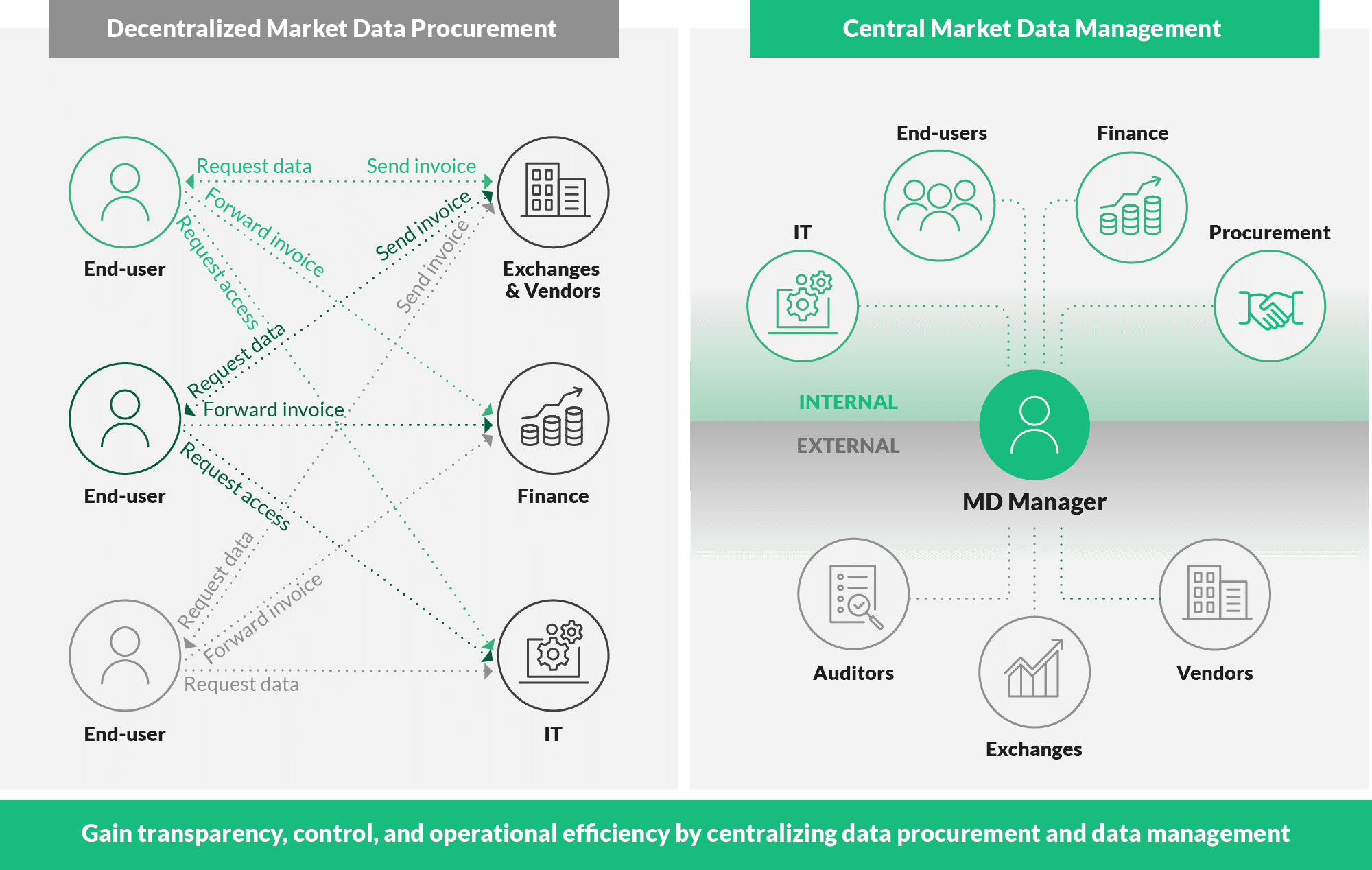03.06.2025 / 16:00
The hidden maze of market data licensing
License Management

Managing market data licenses today is anything but straightforward. What seems like a simple subscription quickly turns into a complicated mix of licensing rules, usage restrictions, and rising costs.
Challenge 1: Lack of transparency in a complex IT landscape
Market data now flows through a wide range of systems (trading platforms, risk engines, dashboards, data lakes, and internal databases). With so many tools and technologies in use, companies often lack a central overview of where licensed data is used and whether it complies with licensing terms. This lack of transparency increases the risk of misuse, inefficiencies, and problems during audits.
Challenge 2: Licensing complexity and lack of transparency
Licensing models vary widely across vendors and use cases – internal vs. external, display vs. derived, redistribution rights, and more. Often, it is unclear what is allowed, creating a high risk of accidental misuse.
Market data flow allowed, creating a high risk of accidental misuse. across the enterprise: Market data from external sources flows through internal systems.

Challenge 3: Rising costs and growing pressure
Market data is becoming more expensive. Many vendors are raising prices and introducing new fee models. At the same time, data usage is being watched more closely. This makes it harder for firms to keep track of costs. Without clear oversight, they risk surprise back charges, audit issues, and rising operational expenses.
Challenge 4: Decentralized data procurement
Many firms still operate with decentralized data management. Individual teams procure data independently, leading to redundancies, uncontrolled usage, and license breaches.

Centralizing market data procurement: Centralization improves transparency, control, and operational efficiency.
Challenge 5: Growing demand – existing sources and new data types
As firms expand their data strategies, demand is rising not only for traditional market data but also for new, often unstructured sources such as ESG metrics, sentiment data, or weather data. These emerging datasets offer valuable insights but often come with fragmented standards and unfamiliar licensing terms. This dual pressure heightens the complexity of data integration, governance, and compliance across the enterprise.
Challenge 6: Cost allocation according to causation
Accurately attributing market data costs to the business units or activities that drive consumption remains a key challenge. With complex licensing terms and widespread data usage across teams, establishing true causality is difficult. However, transparent cost allocation is essential not only for accountability and cost control, but also to evaluate business cases more effectively and support data driven investment decisions.
Here is the good news: This is not a hopeless puzzle. Smart firms are starting to treat data licensing as what it really is, a strategic capability. And they are seeing results.
